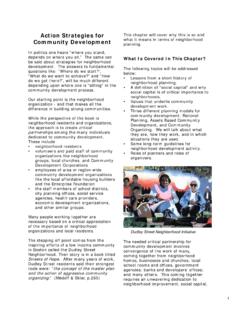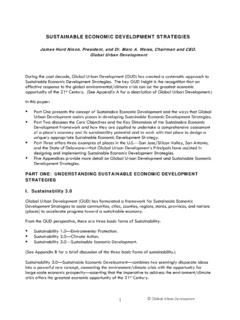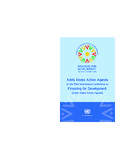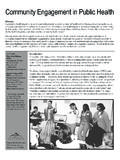Transcription of Strategies and guidelines for building health sector …
1 Mass Casualty Management Systems Strategies and guidelines for building health sector capacity World health Organization 20 Avenue Appia, CH - 1211 Geneva 27, Switzerland FAX: +41 22 791 4844 Email: health action in Crises Injury and Violence Prevention April 2007. health action in Crises Injury and Violence Prevention 20, Avenue Appia, CH - 1211 Geneva 27, Switzerland Fax: +41 22 791 4844, Email: World health Organization 2007 All rights reserved. Publications of the World health Organization can be obtained from WHO Press, World health Organization, 20 Avenue Appia, 1211 Geneva 27, Switzerland (tel.)
2 : +41 22 791 3264; fax: +41 22 791 4857; e-mail: Requests for permission to reproduce or translate WHO publications whether for sale or for April 2007. noncommercial distribution should be addressed to WHO Press, at the above address (fax: +41 22 791 4806; e-mail: The designations employed and the presentation of the material in this publication do not imply the expression of any opinion whatsoever on the part of the World health Organization concerning the legal status of any country, territory, city or area or of its authorities, or concerning the delimitation of its frontiers or boundaries.)
3 Dotted lines on maps represent approximate border lines for which there may not yet be full agreement. The mention of specific companies or of certain manufacturers' products does not imply that they are endorsed or recom- mended by the World health Organization in preference to others of a similar nature that are not mentioned. Errors and omissions excepted, the names of proprietary products are distinguished by initial capital letters. All reasonable precautions have been taken by the World health Organization to verify the information contained in this publication. However, the published material is being distributed without warranty of any kind, either expressed or implied.
4 The responsibility for the interpretation and use of the material lies with the reader. In no event shall the World health Organization be liable for damages arising from its use. Printed by the WHO Document Production Services, Geneva, Switzerland Mass CasuaLty Management systems Strategies and guidelines for building health sector capacity health action in Crises Injury and Violence Prevention April 2007.. health action in Crises World health Organization Injury and Violence Prevention . Table of Contents Acknowledgements .. 2. Foreword .. 3. Abbreviations and acronyms .. 4. A note to readers.
5 5. Preamble: mass casualty management planning concept within the wider health sector emergency management .. 7. Introduction .. 9. Scope and purpose of these guidelines .. 9. Why preparedness is a growing priority ..10. WHO policy on emergency preparedness ..10. Guiding principles ..11. Mass casualty management: a key component of national emergency system ..13. A complex partnership ..13. The Ministry of health : a leading partner ..14. Planning for mass casualty management at national Establishing a baseline ..16. Hazard analysis and risk assessment ..16. Developing a National Mass Casualty Management Plan.
6 17. Training guidelines and standards ..18. Monitoring, surveillance and early warning ..19. Financial and material resources .. 20. Provincial or state (intermediate) level .. 20. Community and local government level .. 21. Planning and organization .. 21. A culture of community preparedness .. 23. Managing mass fatalities .. 24. Communications planning .. 24. health care facility level .. 25. Planning .. 26. Emergency and trauma care systems .. 27. Training and exercises .. 27. Communications .. 28. Glossary of terms .. 30. Sources of information .. 32. List of Participants .. 33.
7 Mass Casualty Management Systems . Strategies and guidelines for building health sector capacity health action in Crises Injury and Violence Prevention World health Organization Acknowledgements The World health Organization acknowledges with thanks all participants in the workshop that gave rise to these guidelines . They are: Dudley McArdle, Marcel Dubouloz, Raed Arafat, Barbara A. Butcher, Teodoro Javier Herbosa, Richard Hunt, Manjul Joshipura, Jan Karlson, Ann R. Knebel, William H. Lyerly, Adelheid Marschang, Charles Mock, Farzad Panahi, Howie Prince, Jeff Runge, Scott Sasser, Firas A.
8 Tawfiq, Kevin Yeskey. Thanks are due to the following reviewers: Pascal Cassan, Jeffrey Hammond, Francesco Della Corte, Betsy Weiner, Ron van Konkelenberg, Peter Koob, and to Andrew Wilson for technically editing the guidelines . Thanks are also due to the WHO staff who supervised, contributed to and coordinated the development and the production of the guidelines . WHO also thanks the Governments of Norway and Sweden and the United States Centers for Disease Control and Prevention for their generous support of this work. Mass Casualty Management Systems Strategies and guidelines for building health sector capacity health action in Crises World health Organization Injury and Violence Prevention Foreword Major emergencies, crises and disasters have become more frequent during recent decades, especially in middle and low income countries.
9 They affect more and more people, disrupting health sector programmes and essential services, and slowing the process of sustainable human development. Many lives could be saved if the affected communities were better prepared, with an organized scalable response system already in place. In addition, survivors of mass casualty incidents often suffer disabilities or health impairment physical or psychological. These can severely strain the health sector and draw scarce resources away from other essential programmes. Again, much of this is avoidable. Experience shows that the community is the first to provide emergency assistance in such incidents.
10 For this reason, preparedness planning increasingly emphasizes building capacity (human, organizational and infrastructural) at the community level. Empowering communities to develop emergency management plans for mass casualty incidents requires strong involvement by health authorities at all levels, especially the national level, as well as support from other sectors. The common gaps in health system preparedness around the world are generally well understood, but they are often not addressed in a comprehensive and systematic way. In particular, many countries have not yet developed Mass Casualty Management Plans, and communities are too often left alone to develop preparedness and response plans without guidance from higher levels.
















